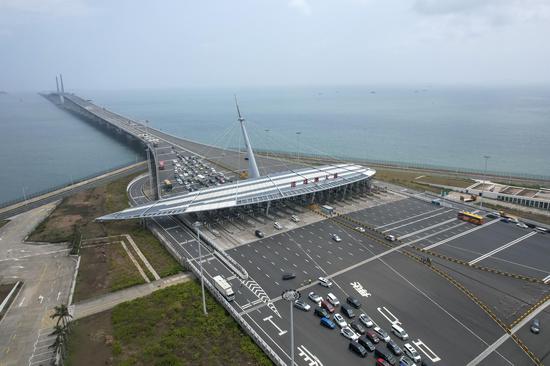
China's Long March 6C carrier rocket makes its debut flight, placing four satellites in space, May 7, 2024. (Photo/CCTV)
Long March 6C, the latest member in China's Long March carrier rocket family, conducted its debut flight on Tuesday morning, sending four small satellites into space.
The 43-meter-tall rocket blasted off at 11:21 am at the Taiyuan Satellite Launch Center in a mountainous region in Shanxi province and soon placed four satellites - a radar satellite, an optical remote-sensing satellite and two experimental satellites - into their preset orbit, according to the Shanghai Academy of Spaceflight Technology, developer of the rocket model and a subsidiary of State-owned conglomerate China Aerospace Science and Technology Corp.
The two-stage launch vehicle has a diameter of 3.35 meters and is propelled by three engines consuming liquid oxygen and kerosene.
With an overall liftoff weight of 215 metric tons, the model is capable of transporting spacecraft with a combined weight of about 2.4 tons to a typical sun-synchronous orbit with an altitude of 500 kilometers, according to Li Chenggang, its chief designer at the Shanghai academy.
Research and development of the new rocket started in early 2020, he said, noting that the model will mainly be used to meet demands from commercial space enterprises by transporting their small and mid-sized satellites to sun-synchronous orbits.
By now, the country has developed and launched more than 20 types of Long March-series rockets. The Long March family is the pillar of the country's space programs and has fulfilled 520 launch missions.
Following its successful maiden launch, the Long March 6C has become the 17th in the Long March fleet that is in active service.


















































 京公网安备 11010202009201号
京公网安备 11010202009201号